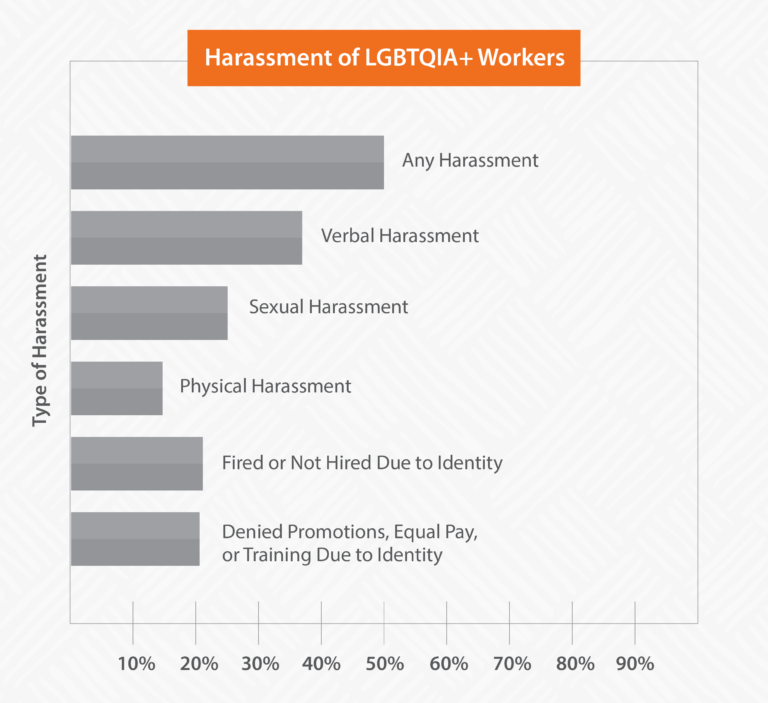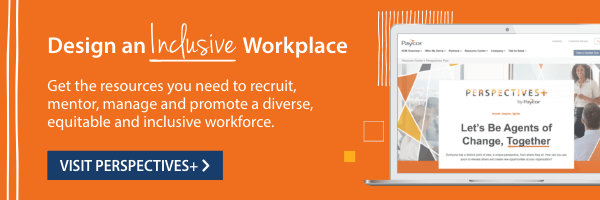Diversity is more than a buzzword. In today’s workplace, it’s an essential component of any HR strategy. What’s more, diversity is complex and encompasses every aspect of identity. For example, a racially diverse company with no women in leadership might need to reevaluate its DE&I goals.
To be truly inclusive, HR should look for ways to support LGBTQIA+ employees. Despite progress in recent years, these workers still face discrimination both in and outside of work. Creating a psychologically safe environment not only shows them you care, it also drives employee retention. In this article, we’ll explore specific tactics HR can use to foster an LGBTQIA+-friendly workplace.
Why HR Should Support LGBTQIA+ Employees
Today, 7.6% of adults in the U.S. openly identify as LGBTQIA+ (Gallup). That number can only account for out members of the LGBTQIA+ community, and it excludes people who are questioning or choose to keep their identities private. And even with that limitation, numbers are steadily rising. Jeffrey M. Jones, reporting for Gallup, explains that “overall, each younger generation is about twice as likely as the generation that preceded it to identify as LGBTQ+.” Over time, HR can expect more and more employees to identify as LGBTQIA+.
Unfortunately, these employees are at an extremely high risk of workplace discrimination. One study found that 50% of LGBTQIA+ respondents have experienced some form of harassment or discrimination at work (Center for American Progress). That number included 70% of transgender respondents. What’s more, harassment can be hard to spot, especially when it takes the form of microaggressions. To effectively address discrimination, HR needs to take a proactive approach.

Supporting these team members is essential. For one thing, it’s a compliance issue. Title VII is a federal law that protects employees from discrimination based on sex, gender, and sexual orientation (EEOC). To stay compliant, your HR strategy must prohibit discrimination with respect to hiring, promotions, discipline, training, compensation, fringe benefits, and more.
Compliance is just the beginning. A strong DE&I strategy also helps your business grow. LGBTQIA+-friendly companies tend to be more profitable and have higher stock valuations (Forbes). They also have a positive impact on the health and well-being of LGBTQIA+ employees, improving their job satisfaction and productivity (UCLA).
How to Support LGBTQIA+ Employees
The following ideas can help you support LGBTQIA+ employees, but they’re just a starting point. Like any other group of people, these workers have complex and varied priorities. An effective DE&I strategy incorporates general best practices while staying responsive to the needs of your unique team.
Use Inclusive Language
Avoid making assumptions about any person’s gender or sexuality. That includes your employees, their family members, customers, and so on. Imagine you’re chatting with coworkers about your weekend plans. One person says, “I’m excited to go hiking with my partner.” That statement doesn’t tell you anything about their partner’s gender. Until and unless you learn more, you can safely refer to your colleague’s partner using “they/them” pronouns.
Inclusive language can impact all company communications, from internal announcements to product launches to office signage (especially in public bathrooms). For example, when an employee gives birth to a baby, you might expect them to take time off for maternity leave. But what if that employee is a trans man or a non-binary person? Calling this benefit “parental leave” can go a long way toward making them feel included.
To learn more about this issue and see a glossary of inclusive LGBTQIA+ terms, check out our webinar, How to Be an Ally 101.
Offer Inclusive Benefits
Benefits can be complicated for LGBTQIA+ families. Same-sex couples with children may have to go through an adoption process to qualify for certain healthcare benefits. It can also be difficult for trans and non-binary people to access gender-affirming care, and many have to travel out of state or abroad to find qualified healthcare providers. Gender-affirming care could include anything from gender-affirmation surgery to just having a primary care doctor who consistently uses your correct pronouns. To address these problems, HR should get employee feedback on policies and design a benefits package that meets their needs. Then, work closely with your insurer to understand the available options.
Organize Employee Resource Groups (ERGs)
No matter how much support LGBTQIA+ employees get from HR, they also need support from each other. Employee Resource Groups (ERGs) encourage team members to connect with people who share their identities and interests. An ERG focusing on LGBTQIA+ issues could be open to both LGBTQIA+ workers and allies. Group members might spearhead initiatives that improve company culture, like Pride events or policy updates. They could also offer each other valuable emotional support.
Foster Open Communication
As more and more people come out as LGBTQIA+, best practices are changing fast. Some terms that were considered respectful just a few years ago are now antiquated or even offensive. Cultivating an inclusive environment means being flexible. HR should keep an open line of communication with employees at every level and be ready to make changes as needed.
Open communication also promotes psychological safety. Despite your best efforts, LGBTQIA+ employees may still experience harassment at work. If employees trust you to take their concerns seriously, they’ll be more likely to report problems so HR can address them.
Cultivating an Inclusive Culture
Supporting LGBTQIA+ employees has to be a company-wide goal. HR sets the tone for company culture, but you’re not present for every interaction between frontline workers. Leaders should encourage employees to support each other directly, as well. For example, you could:
- Include your pronouns in your Zoom profile and encourage other team members to do the same. Pro tip: Don’t make this a company-wide policy. A mandate could alienate employees who are questioning their gender identity or those who choose not to be out at work.
- Participate in Pride events or sponsor local LGBTQIA+ interest groups. Invite employees to suggest specific events or organizations they’d like to support.
- Train all employees in best practices. Managers, in particular, should learn the soft skills they need to cultivate an inclusive and respectful workplace.
How Paycor Helps
Paycor’s HR solutions empower leaders to foster diversity, inclusion, and psychological safety at work. Start by surveying employees with Paycor Pulse to learn more about your team’s unique needs. Then, you can use our Benefits Advisor to design an inclusive benefits package, Paycor Paths to train your team in essential soft skills, and Talent Development software to invest in your employees’ long-term success. Streamline HR processes so you can focus on the big picture and support everyone on your team.










